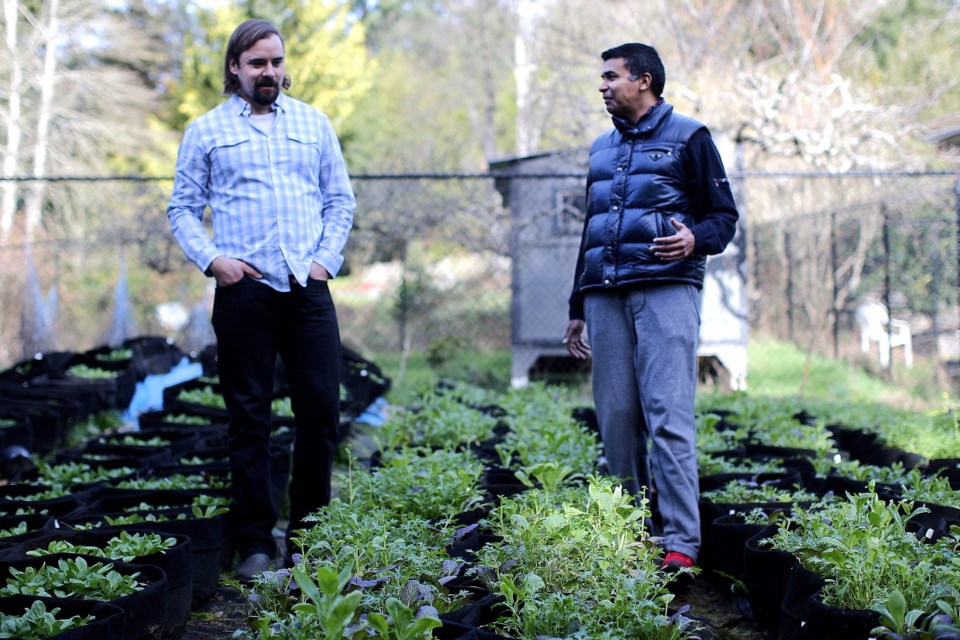There is an audible and growing buzz in the region around growing a culture and economy nourished by good food.
Everything is being re-examined about our current global food system.
Even though we have seen gains in the fight against hunger, one in eight people still go to bed hungry. Malnourishment is taking on new meaning as more than 30 per cent of the planet is now overweight or obese.
There is growing concern about the impacts of the global food system on the environment and the fact that more than a third of all food produced goes to waste.
With 10 billion people to feed by 2050, where will we find more land, enough water and an increase in productivity that can be supported by our ecosystem?
> More stories from Capital Progress magazine
These are big and complex challenges and it is easy to feel overwhelmed and powerless.
In this region, my experience is quite the opposite. I see people who are taking responsibility, digging deep into the challenges and taking careful and pragmatic action to build a health-oriented food system taking into account its relationship to our ecosystems and rooted in a regional approach.
Here it’s called the Good Food Movement, and it’s gaining momentum.
Shake up a cocktail of adversity, malcontent and creativity; add a dash of hope and a sprinkle of positivity and your result is innovation. I don’t see people lamenting about how it used to be, or paralysed by a future dystopia. I see and experience everyday people from across the region not only thinking about what is needed, but working together to plan and pull together around solutions.
These folks are part of a growing Good Food Network, an alliance looking to make some significant impacts toward healthy and sustainable food system in the region.
Over the past few years, they have identified key areas to focus investment and align efforts behind. The first is to stimulate the local food economy, with a goal of shifting the amount of local island food produced and consumed by Capital Regional District residents from five per cent to 25 per cent Island grown, by 2025.
They are working to learn what this means for the amount of land needed, what we need to do to support new food producers to replace the 50 per cent of farmers who will retire in the next decade, how we rebuild regional storage and distribution infrastructure, and ensure residents understand the value that supporting the local food economy brings.
We see local governments like the CRD putting in place a regional food and agriculture strategy, considering supporting farmers through drainage and exploring ways to increase soil quality.
The District of North Saanich recently acquired almost 100 acres and is converting the derelict Sandown racetrack into accessible land for new growers.
The Salt Spring Island Farmland Trust supports growers on Burgoyne Farm, a 60-acre parcel, and is building The Root. It will provide storage for local farm produce, a fully equipped processing kitchen for new value-added products and a point of distribution for large quantities of local food year-round.
We see programs like Haliburton Farm in Saanich and their Eco Farm School incubating successful new farm businesses. There is also a resurgence and revitalization of efforts and skills building around Indigenous foods.
The second area of focus of the Good Food Network is to ensure that the food system actually feeds people — not just fancy food for foodies, but all residents.
There are more than 50,000 people in our region who are food insecure. The Good Food Shift is an initiative to create support and services to those receiving emergency food so that one to two years down the road it will no longer be needed. Strategies include supporting community and neighbourhood-based hubs where people can access food, but also skills training, empowerment programs and finding social and employment connections.
Through a partnership with the Victoria Foundation and local retailers, the FoodShare Network has developed a Food Rescue and Redistribution Centre that is diverting more than a million pounds of cosmetically imperfect food that would normally go to waste to over 50 agencies, schools and centres across the region.
The third goal of the alliance is around food literacy. Aaren Topley, the local co-ordinator of Farm to School B.C., describes food literacy as involving our hands, minds and hearts.
“For each of us, our understanding and relationships to our foods is different. Having the knowledge about our food system helps us to make informed choices about our foods; the ability to read labels and prepare and cook food is also key. Food literacy also involves understanding the personal and cultural connection to our foods. This could be as simple as sitting down with our families to share a meal together.”
There is lots on the go. To sign the Good Food Resolution and connect with the Good Food Network, visit www.crfair.ca
Linda Geggie is executive director of the Capital Region Food and Agriculture Initiatives Roundtable (CRFAIR)
